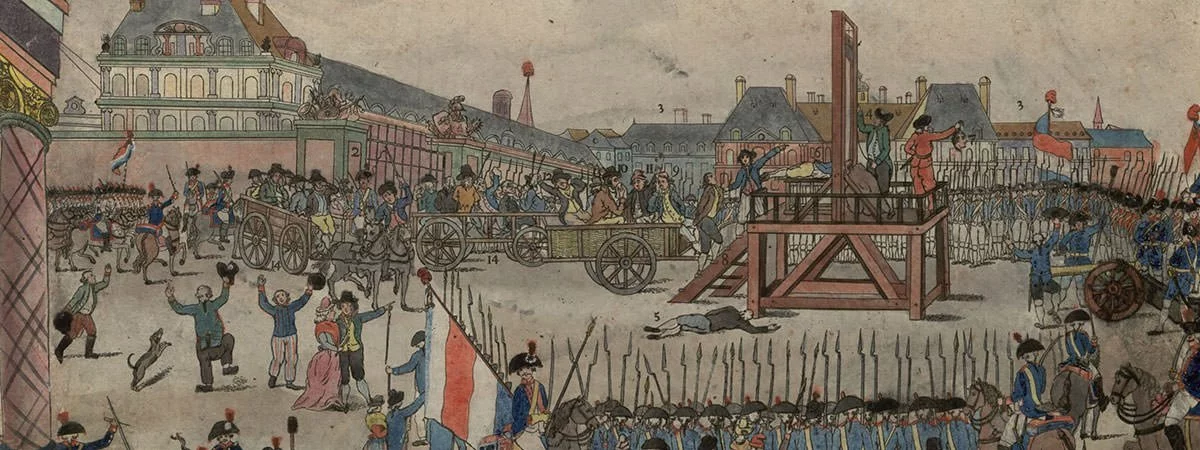Born on May 6, 1758 in Arras, France, Maximilien de Robespierre was the son of a lawyer. During his years at school and college, he was inspired by Roman philosophers like Cicero and Cato; but most of all by the Enlightenment philosopher Jean-Jacques Rousseau. Among other things, Rousseau had argued for the theory of Social Contract which was against the divine right of the monarchs and asserted that only the people had the right to chose how they were governed. Robespierre received a law degree in 1781 and became a lawyer at Arras. His private practice provided him with a comfortable income.
The Third Estate
France was facing a severe financial crisis in the 1780s due to which King Louis XVI convoked the Estates-General on 8th August, 1788. At this time France was divided into three estates: the First was the clergy, the Second was the nobility, and the Third was the rest, which included merchants, lawyers, laborers and peasants. Though the Third Estate comprised around 98% of the French population, it was exploited by the other two estates. By this time, Robespierre was already known for his altruism. He was elected as the fifth deputy of the Third Estate of Artois to the Estates-General even though he was only thirty, comparatively poor and lacked patronage. As their demands were not met, the Third Estate declared itself the National Assembly on 13th June 1789. It then pledged not to separate until they had given France a constitution soon transforming itself into the National Constituent Assembly. Robespierre was a part of both these bodies
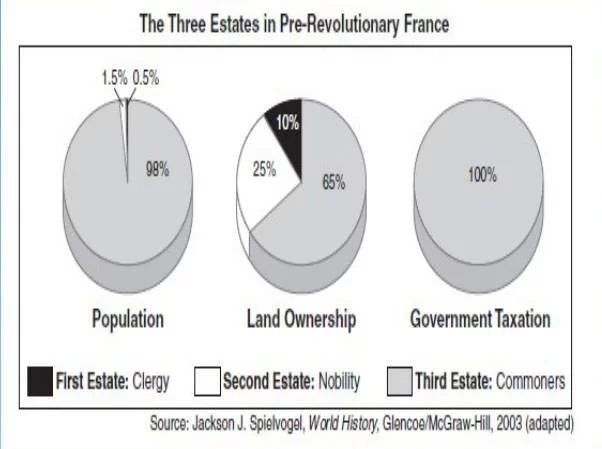
The Incorruptible
As the French Revolution gripped the nation, Robespierre frequently spoke in the Constituent Assembly in favor of the lower classes of France voicing ideas supporting equal rights for all. During this period Robespierre coined the motto “Liberté, égalité, fraternité” (“Freedom, Equality, Fraternity”). This is now the national motto of France.
The Society of the Friends of the Constitution, known as the Jacobin club, was the most influential political club during the French Revolution. Robespierre became associated with Jacobin Club and in April 1790, he was elected its president. He became increasingly popular in the club as well as among the masses for his attacks on the monarchy and for his advocacy of democratic reforms. He became known as l’Incorruptible (The Incorruptible) for his steadfast adherence to his views. This earned him a devoted following among the Jacobins.
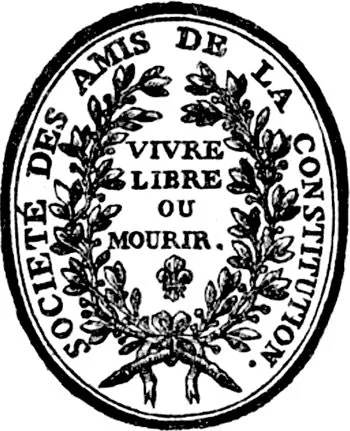
Trial And Execution of Louis XVI
In June 1792, Robespierre proposed an end to the monarchy and the subordination of the Assembly to the popular will. On 21st September 1792, the monarchy was abolished and France was declared a Republic. The National Convention, the first government of the French Revolution, was founded; and a new constitution with no monarchy was put in place. Robespierre was elected first deputy for Paris to the National Convention. The National Convention became divided into two main factions: the moderate Girondins, who favored political but not social democracy; and the more radical Montagnards, the far left who were led by Robespierre. During the trial of King Louis XVI, Robespierre spoke 11 times and called for death of the monarch. On January 21, 1793, Louis XVI was executed.
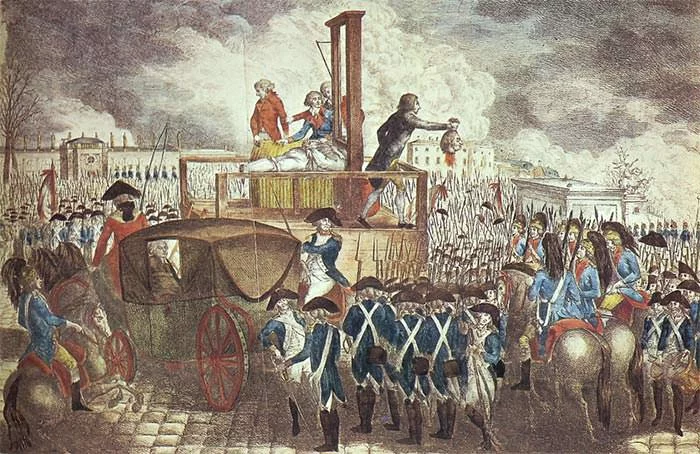
Fall of the Girondins
The execution of the king, scarcity of food and the rising prices created a revolutionary mood in France. The Montagnards took advantage of this to increase their power in the Convention at the expense of the Girondins. On May 26, 1793, Robespierre called on the people “to rise in insurrection.” On June 2, 29 leading Girondins were arrested. After the fall of the Girondins, on July 27, 1793, Robespierre was elected to the Committee of Public Safety, which had been created in April. The Committee became the de facto executive government in France; and Robespierre became its most influential member.
The Reign of Terror
Amid threat of a foreign invasion and rising disorder in the nation, the 12 member Committee of Public Safety led by Robespierre institutionalized The Terror: systematic and lethal repression of perceived enemies within the country. Revolutionary armies were established, farmers were forced to surrender grain demanded by the government, prices were fixed for essential goods, wages were fixed and Law of Suspects was passed. Law of Suspects was a decree which authorized the charging of counter-revolutionaries with vaguely defined “crimes against liberty”. This became known as the Reign of Terror and lasted for more than 10 months. In the name of ridding the threats to the revolution, an estimated 500,000 suspects were arrested, 17,000 were officially executed and 25,000 died in summary executions, i.e. without benefit of a full and fair trial. Guillotine became associated with the period and was known as “Madame Guillotine” or “The National Razor”.
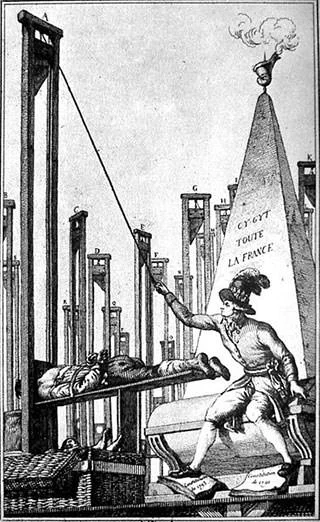
Overthrow And Execution
Maximilien Robespierre became the most feared man in France during the Reign of Terror. However, by mid-1794, he had become a target of conspiracies due to his views but mostly because the members feared that they could be guillotined next. Thus, when he gave a speech demanding another purge of deputies, the fearful deputies plotted against him. The next day, July 27, 1794, Robespierre came under verbal attack at the National Convention and an order was made to arrest Robespierre and his followers. Robespierre tried to kill himself with a pistol, but only managed to shatter his lower jaw. The following day, on 28th July 1794, Robespierre was guillotined without trial. 21 of his closest associates were also executed bringing an end to the Reign of Terror.
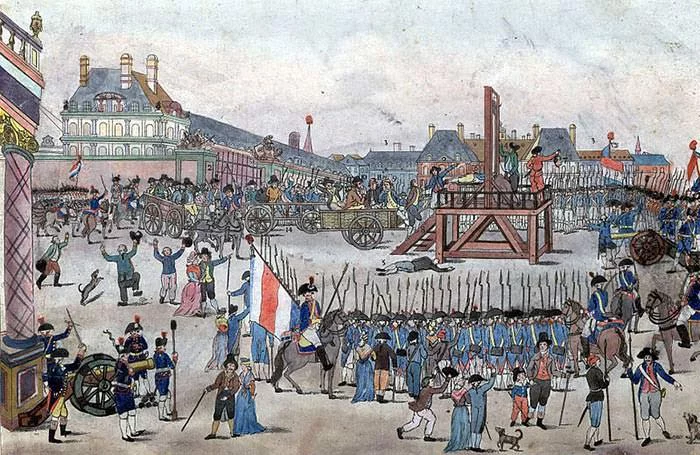
Assessment
Ironically for a man who was against the death penalty, Maximilien Robespierre is most famous for being the leader of the Reign of Terror due to which many of his other accomplishments are overlooked. He remains a controversial figure of the French Revolution with some viewing him as dictatorial and fanatical while others saying that his role in the Reign of Terror was exaggerated to make him a scapegoat. Whatever might be the case, Robespierre was the leading radical revolutionary during the French Revolution who played a prominent part during its course.

